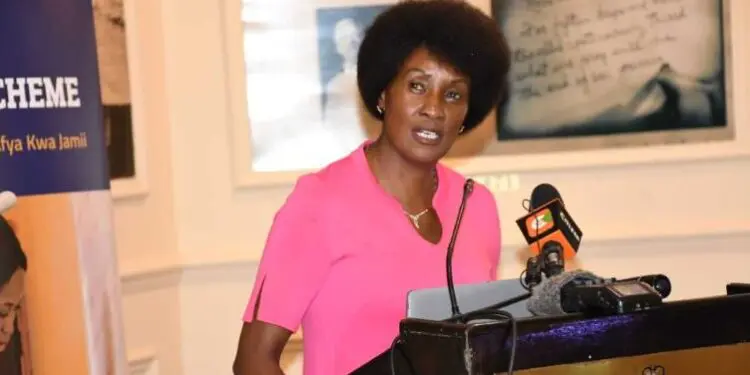50% Of TSC Teaching Jobs Comprise Of 3 Tribes. In a recent report, the Teachers Service Commission (TSC) identified the three tribes that account for about half of the teaching profession.
It is now becoming known that of the 406,860 teachers employed by the government, almost half are members of the Kalenjin, Kikuyu, and Luhya tribes.
The Kalenjin community is identified as the tribe with the majority of tutors on the TSC payroll, with 73,309 teachers.
With 64,937 teachers, the Kikuyu tribe ranks second, followed by the Luhya group with 60,912 instructors.
Cumulatively, the three tribes take up 48 per cent of the teaching service revealing massive disparity in regional balance on public teaching jobs across the country.
The Senate Standing Committee on National Cohesion and Equal Opportunity received the data.
Additionally, it shows that the Kamba municipality employs the fourth most teachers across the entire State payroll.
50% Of TSC Teaching Jobs Comprise Of 3 Tribes
The Luo community, with 47,285 instructors, is second only to the tribe with 48,201 teachers, rounding out the top five communities that control the teaching service.
The Kalenjin, Kikuyu, Luhya, Kamba, and Luo make about 70% of the teaching profession overall.
This indicates that the TSC employs 294,644 teachers in total among the five communities.
In the report, the Kisii community are listed as the sixth most dominant tribe in the teaching service with 35,236 teachers. This represents eight per cent.
They are followed with the Meru at 25,930.
This means that TSC has employed 355, 810 teachers from only seven tribes which translates to 87 per cent of the entire teaching fraternity in public service.
It also means that the remaining 38 communities are left with just 51,050 teaching positions. This represents 13 per cent.
In the report, Kenyan Europeans have the least number of teachers under TSC payroll with only one tutor.
50% Of TSC Teaching Jobs Comprise Of 3 Tribes
This is followed by Kenyan Asians with only nine teachers, and Dasnach-Shangil (11).
Others trailing the employment list include Murulle (14), Elmolo (17), Gosha (20), Njemps (26), Kenyan Arab (23), Sakuye (32), Dorobo (17), Rendille 87.
In her response to the revelations, TSC Chief Executive Dr Nancy Macharia defended the numbers noting that they reflect the distribution of the country’s population.
“The figure is very relative to the population of the country. The commission has achieved ethnic balance at various stages of appointment in that there is no representation of more than one-third of staff coming from the same ethnic community,” Dr Macharia said.
Dr Macharia argued that the commission embraces fair competition and merit as the basis of appointments and promotions.
We regularly review our policies to ensure the realization of constitutional aspirations on gender balance, fair competition, and employment of persons with disabilities,” she said.
At the same time, the same trend replicates at the TSC secretariat with minor adjustments.
The Kikuyu community dominates employment in the secretariat with 567 staff. This represents 19 per cent of entire secretariat staff,.
This is followed by 483 staff hailing from the Kalenjin community, representing 16 per cent.
Kambas come third with 360 staff, representing 12 per cent of the entire secretariat staff.
Another 300 staff are from Luhya community making them the fourth dominant tribe in the secretariat.
Closing the list of top five tribes in the secretariat is the Kisii community with 226 employees with Luos closely following at sixth position with 221 staff.
In its report, TSC says it has employed a total of 204,373 female teachers and 202,487 male teachers thus achieving gender parity in employment of teachers.
Additionally, the Commission says it has made efforts to include persons living with disabilities (PWDs) in its recruitment. Report says some 5,666 PWD teachers have been employed.
According to the study, the largest age group of instructors consists of around 153,539 educators who are between the ages of 30 and 39.
50% Of TSC Teaching Jobs Comprise Of 3 Tribes
There are 1,912 teachers in the 20–24 age range, and 50,485 tutors in the 25–29 age range.
TSC employs 107,837 teachers between the ages of 40 and 49, and 90,459 teachers between the ages of 50 and 59.
The age group of 60 to 64 years old comprises the smallest number of instructors (2,548), while the age group of 65 to 70 years old has the lowest representation (80 teachers).
